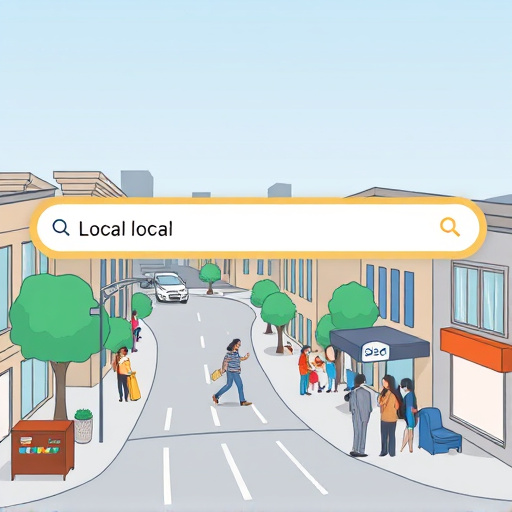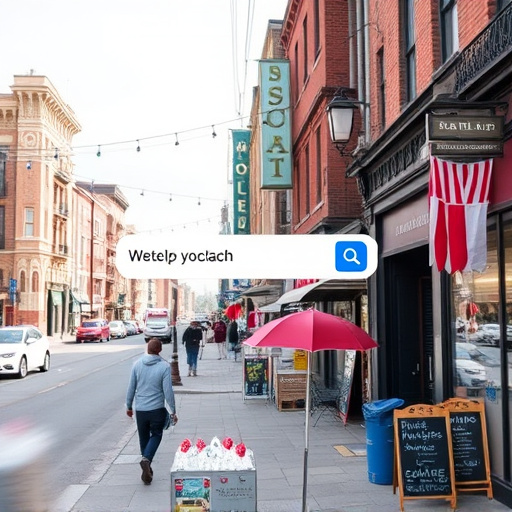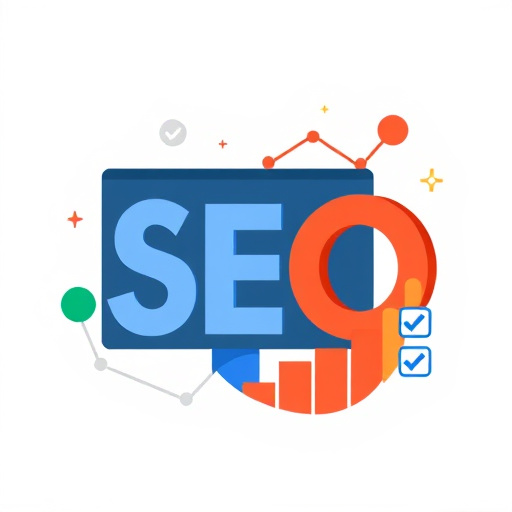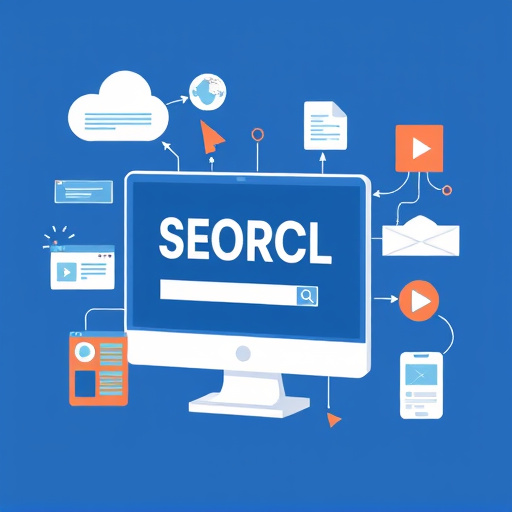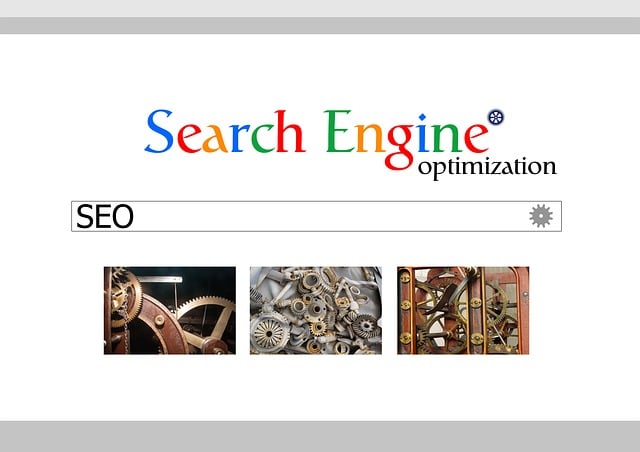Local Search Engine Optimisation: Unlocking Digital Visibility for Businesses
Introduction
Welcome to an in-depth exploration of Local Search Engine Optimisation (LSEO), a powerful strategy that propels local businesses into the digital spotlight. In today’s competitive market, understanding LSEO is not just beneficial but crucial for any company aiming to thrive locally and gain a competitive edge. This article aims to guide you through the intricate world of LSEO, providing valuable insights, practical examples, and actionable strategies to enhance your online presence. By the end of this journey, readers will grasp the importance of LSEO, its global impact, and how it can be effectively utilised to drive business success.
Understanding Local Search Engine Optimisation: Unveiling the Basics
Local Search Engine Optimisation is a specialised form of search engine optimisation (SEO) focused on enhancing visibility and driving targeted traffic for businesses operating within specific geographic areas. It involves optimising online content, technical aspects of websites, and local business listings to ensure that local customers can easily find and engage with a company when searching for relevant products or services.
Core Components:
- Keyword Research: Identifying location-specific keywords and phrases that potential customers use when searching for businesses like yours. Tools like Google Keyword Planner and SEMrush assist in this process.
- On-Page Optimisation: Optimising website content, including titles, meta descriptions, headings, and body text, to include relevant local keywords naturally.
- Local Business Listings: Claiming and optimising listings on platforms like Google My Business, Yelp, Facebook, and industry-specific directories to ensure consistent NAP (Name, Address, Phone number) information.
- Technical SEO: Ensuring a website is mobile-friendly, secure (HTTPS), has fast loading times, and is crawlable by search engines.
- Offline Marketing: Integrating online and offline marketing efforts, such as local partnerships, events, and print collateral, to reinforce the online presence.
Historical Perspective:
LSEO’s roots can be traced back to the early days of SEO when businesses primarily focused on national rankings. However, with the rise of smartphones and location-based services, search engines like Google recognised the growing importance of local search intent. In 2018, Google introduced BERT (Bidirectional Encoder Representations from Transformers), a significant update that improved natural language processing, further emphasising the need for contextually relevant content. This shift marked a turning point in LSEO, pushing businesses to tailor their strategies to meet the unique needs of local customers.
Global Impact and Trends: A Local Revolution on a World Stage
The influence of Local Search Engine Optimisation extends far beyond borders, with key trends shaping its global trajectory:
| Region |
Trends |
Impact |
| North America |
Voice search optimisation and local intent are prominent. Businesses are leveraging voice assistants like Siri and Alexa to enhance their LSEO strategies. |
Increased focus on natural language processing and conversational AI to improve user experience. |
| Europe |
Strict data privacy regulations, such as GDPR, influence LSEO practices. Businesses must ensure compliance while maintaining robust local marketing efforts. |
Emphasis on transparency, user consent, and data security in online marketing campaigns. |
| Asia Pacific |
Mobile-first indexing and rapid internet penetration drive LSEO. Local businesses in this region are rapidly adopting mobile optimisation strategies. |
High potential for growth as more consumers turn to mobile devices for local searches. |
| Latin America |
Localised content and language optimisation are essential. Businesses cater to diverse Spanish and Portuguese-speaking markets. |
Better cultural relevance and improved user engagement due to tailored content. |
These trends highlight the dynamic nature of LSEO, requiring businesses to adapt their strategies to meet the unique needs and preferences of different regions.
Economic Considerations: Unlocking Local Market Potential
LSEO plays a pivotal role in driving economic growth and shaping local markets:
- Market Dynamics: By improving online visibility, local businesses can attract more customers, increase sales, and contribute to their community’s economic health. This is especially significant for small and medium-sized enterprises (SMEs) competing against larger corporations.
- Investment Patterns: Effective LSEO strategies can lead to increased investment in local economies as successful businesses expand or open new locations based on their online performance.
- Case Study: Chicago Restaurant Scene: A study of the Chicago restaurant industry revealed that businesses with strong LSEO profiles attracted more local customers, leading to higher revenue and job creation within the community. This success prompted further investments in the area, fostering a thriving culinary scene.
Technological Advancements: Powering Local Discoverability
Technology is at the heart of LSEO’s evolution, driving innovation and enhancing local discoverability:
- Artificial Intelligence (AI) and Machine Learning: AI algorithms analyse vast amounts of data to predict user preferences and optimise search results. Machine learning enables personalisation, ensuring that local businesses appear relevant to individual users.
- Voice Assistants and Smart Speakers: With the rise of voice search, LSEO strategies must incorporate natural language processing to rank well in voice assistant results. Optimising for questions and conversational queries is essential.
- Geolocation Services: Geotagging and geolocation data enable businesses to target specific locations, improving their visibility during local events or promotions.
- Augmented Reality (AR) and Virtual Reality (VR): These technologies offer immersive experiences, allowing customers to virtually explore stores or services, particularly useful for retail and travel-related LSEO.
Policy and Regulation: Navigating the Legal Landscape
The legal framework surrounding LSEO is complex and ever-evolving, with various policies and regulations impacting its practice:
- Data Privacy Laws: As mentioned earlier, regulations like GDPR in Europe and CCPA (California Consumer Privacy Act) in the US set guidelines for data collection and usage. Businesses must obtain consent and provide transparency to avoid legal repercussions.
- Local Business Protection: Some regions have policies to protect local businesses from excessive online competition, ensuring a level playing field. For example, France’s “Service aux Collectivités Locales” (Service to Local Communities) law promotes local business support.
- Industry-Specific Regulations: Certain industries, such as healthcare and finance, have specific regulations regarding online marketing, impacting LSEO strategies within these sectors.
Challenges and Criticisms: Overcoming Barriers to Success
Despite its numerous benefits, LSEO faces challenges and criticisms that businesses must address:
- Competitive Markets: In highly competitive cities or industries, ranking locally can be challenging. Businesses need robust strategies and unique value propositions to stand out.
- Mobile-First Indexing: While mobile optimisation is crucial, it also presents challenges, especially for websites not initially designed with a mobile-first approach.
- Google Penalties: Search engines may penalise sites for black-hat SEO practices or low-quality content, impacting local rankings. Maintaining high standards and adhering to guidelines is essential.
- Solution: Adapt and Innovate: Regularly updating strategies, staying informed about algorithm changes, and providing valuable, location-specific content are effective ways to overcome these challenges.
Case Studies: Real-World Success Stories
Case 1: Local Flower Shop Flourishes Online
A small flower shop in Seattle, Washington, struggled to compete with large online retailers. They implemented a comprehensive LSEO strategy, focusing on high-quality local content, engaging social media posts, and optimised listings. As a result, their website saw a 45% increase in local organic traffic, leading to higher sales and customer loyalty. The shop became a go-to destination for residents seeking fresh floral arrangements.
Case 2: Hotel Chain Expands Locally with LSEO
A mid-sized hotel chain aimed to expand its presence in new cities. By utilising LSEO techniques, they targeted specific locations and keywords related to travel and accommodation. Their strategy included localised content creation, partnerships with travel influencers, and optimised online listings. This approach resulted in a 30% increase in direct bookings within six months, outperforming their national competitors locally.
Future Prospects: Shaping the Next Frontier of LSEO
The future of Local Search Engine Optimisation is filled with exciting possibilities, emerging trends, and strategic considerations:
- Voice Search Dominance: As voice assistants become more prevalent, optimising for conversational queries will be crucial. Natural language processing advancements will play a significant role in ranking local businesses based on user intent.
- Personalised Local Results: AI algorithms will continue to refine search results, personalising them for individual users based on their location, preferences, and search history.
- Local Video SEO: With the rise of video content, optimising videos for local search becomes essential. This includes incorporating location tags, descriptions, and relevant keywords in video titles and transcripts.
- Geofencing and Location-Based Targeting: Advanced geolocation technologies will enable businesses to target specific locations for promotions and offers, enhancing LSEO campaigns.
- Focus on User Experience: Search engines are increasingly prioritising user experience, encouraging businesses to create seamless, mobile-friendly websites and provide valuable content.
Conclusion: Navigating the Local Digital Landscape
Local Search Engine Optimisation is not just a marketing strategy; it’s a powerful tool for local businesses to thrive in the digital age. By understanding its core principles, staying informed about global trends, and adapting to technological advancements, businesses can harness the full potential of LSEO. The case studies presented demonstrate that effective LSEO strategies drive success, foster community engagement, and contribute to economic growth.
As the digital landscape continues to evolve, LSEO remains a dynamic field, offering endless opportunities for businesses to connect with their target audiences in meaningful ways. Embracing these changes and staying ahead of the curve will be key to achieving online dominance in the local market.
FAQ: Answering Common Questions About Local SEO
Q: How does LSEO differ from traditional SEO?
A: Traditional SEO focuses on national or global rankings, targeting a broad audience. LSEO, however, is location-specific, catering to customers within a certain geographic area. It optimises for local search intent and incorporates region-related keywords and content.
Q: Is LSEO only for small businesses?
A: No, LSEO benefits businesses of all sizes. While it can be particularly effective for SMEs competing against larger corporations, even large brands can leverage LSEO to strengthen their local market presence and cater to specific regions.
Q: How important is mobile optimisation for LSEO?
A: Mobile optimisation is crucial in today’s mobile-first world. With voice search and mobile internet usage on the rise, businesses must ensure their websites are mobile-friendly to rank well locally and provide a seamless user experience.
Q: Can LSEO help international businesses expand into new markets?
A: Absolutely! LSEO can assist international businesses in expanding their local reach by optimising for specific countries or regions. It involves understanding local search trends, languages, and cultural nuances to tailor marketing efforts effectively.
Q: How often should I update my LSEO strategy?
A: LSEO strategies should be regularly reviewed and updated, ideally every quarter or when there are significant changes in your business, market trends, or search engine algorithms. Staying agile allows you to adapt to the ever-changing digital landscape.
Local Search Engine Optimisation (LSEO) boosts online visibility for businesses targeting local customers. Strategies include optimizing for location-specific keywords, maintaining consistent business info across platforms, leveraging testimonia…….
Continue Reading
Local Search Engine Optimisation (SEO) is a powerful tool for local businesses to boost online visibility, drive foot traffic, and increase sales by ranking high in local search results. Key strategies include claiming and optimizing Google Busi…….
Continue Reading
The Local SEO Dashboard is a powerful tool for businesses aiming to dominate local search results by providing detailed insights into key metrics like CTRs, review volume, and keyword rankings. Effective Local SEO involves tracking these metrics…….
Continue Reading
Local Search Engine Optimisation (SEO) is a strategic approach to boost business visibility within specific geographic locations, using keyword research to align online presence with customer search behavior. Tools like Reviewly Local Search hel…….
Continue Reading
Online reviews are crucial for businesses to increase local online visibility and build trust with customers. By leveraging platforms like Reviewly Local Search, businesses can encourage satisfied clients to leave positive feedback, enhancing th…….
Continue Reading
Local Search Engine Optimisation (SEO) is crucial for financial advisers to attract local clients in today's digital world. Key strategies include claiming and optimising Google Business Profile, updating business info, using relevant keywo…….
Continue Reading
In today's digital era, small businesses can thrive through Reviewly Local SEO, optimizing for prominent local search visibility on platforms like Google Maps and Yelp. By claiming listings, encouraging customer reviews, and engaging with c…….
Continue Reading
Local SEO is a powerful strategy for businesses aiming to enhance their online presence and attract local customers by optimizing content for specific areas. Key components include consistent business information across platforms like Google My…….
Continue Reading
Local Search Engine Optimisation (SEO) is a strategic approach to enhance business visibility in geographical search results, attracting nearby customers. By understanding target audiences' locations and search intentions, businesses can op…….
Continue Reading
Local SEO is crucial for businesses targeting specific geographic areas, enabling them to connect with nearby customers actively searching for local products and services. By optimizing websites, claiming Google Business Profile, using location…….
Continue Reading
Small businesses aiming to dominate their local market should focus on Local Search Engine Optimisation (SEO). Key strategies include optimizing Google My Business listings, incorporating location-specific keywords, encouraging online reviews, a…….
Continue Reading
Sporting clubs can greatly benefit from Reviewly Local Search optimization, a powerful tool to enhance online visibility and community engagement. By claiming and optimizing listings for location-based searches like "sports activities near…….
Continue Reading
Understanding your Local SEO Dashboard is vital for boosting business visibility locally. By tracking key metrics like location-specific keywords, search result appearances, reviews, and click-through rates, businesses can optimize their Google…….
Continue Reading
The Reviewly Local SEO Dashboard is a powerful tool for businesses aiming to boost local search visibility, offering data on customer reviews, keyword rankings, and key metrics like website traffic and bounce rates. By analyzing these insights,…….
Continue Reading
Local Search Engine Optimisation (SEO) is a powerful tool for small businesses aiming to boost online visibility and attract local customers. Reviewly Local Search offers tailored consultation, strategic listing optimization, review management,…….
Continue Reading
Reviewly Local Search is a specialized service that boosts local business rankings on platforms like Google by optimizing key SEO factors: accurate NAP data (Name, Address, Phone), online reviews, website quality, and location-specific content……..
Continue Reading
In today’s digital landscape, successful franchises understand the power of Local Search Engine Optimisation (SEO) to thrive. This article guides you through the essentials of local SEO for franchises, exploring how it enhances visibility and dr…….
Continue Reading
Local SEO through Reviewly Local Search is a strategic tool for retail stores aiming to boost footfall. By optimizing online presence, maintaining consistent business listings, and encouraging customer reviews, businesses can climb local search…….
Continue Reading
In today's digital age, Reviewly Local Search is a powerful tool for businesses to thrive through effective online review management. By optimizing their Google Business Profile (GBP), businesses can increase local search visibility and cre…….
Continue Reading

